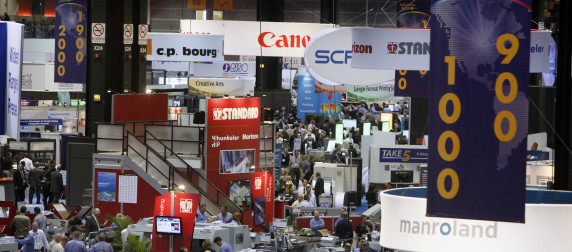With the recent rise in attention among marketers to customer engagement, and customer experience, customer journey, call it what you like, event marketing has risen on the marketing totem pole to a higher priority than ever. But with that new status comes a new sense of accountability as well – “If we’re going to host all these people and feed them, educate them, allow them into our world to meet us and each other, I want to see that the expense associated with that activity pays off . . .”
Finding out what that expense is would be a logical first step, and then bench-marking that expense against what competitors are paying might be another. We’re marketers, after all, competitive and curious, and we test and measure everything!
The finding out part is pretty simple. The 2016 Benchmark & Trends in Attendee Acquisition study was released by Lippman Connects, Exhibit Surveys, Inc. and Tradeshow Executive magazine as a joint study. That study shows that the average cost of attendee acquisition marketing is over $300,000 per event, and when you get more granular, the average show with flat or inflating growth spends roughly $32.66 for each attendee they attract. If you’re spending less than that, and your show is still growing year over year, then you have reached a level of marketing efficiency that bests roughly half the shows out there – congratulations. If you’re spending less than that, and your shows are declining, you have a decision to make: Invest more in your marketing efforts, across all channels, unless you have clear evidence of an inefficient or low-performing channel, or continue to contract until you level back out and your attendance flattens, and then re-examine the relevance of your event to the current audience.
Now the value-tracking portion, which is a little tougher. Start with how many visitors you’re attracting for each paid exhibitor. This is a good number to know for marketing purposes, because exhibitors use this to calculate their expense of acquisition for new customers from your show, and use it as a benchmark when making the decision to exhibit in your show. According to the same study, shows studied had 22 attendees per exhibitor and scheduled the floor time for a total of 21 hours or more.
But attendees don’t just sign up for the exhibitors. Some 50+% of show attendees are there as conference enrollees, and the show portion is just gravy. 42% indicated that they were interested in the exhibits. Smart show organizers recognize this, and are attempting to make this portion even larger by enlisting the help of the exhibitors themselves. Pre-show marketing by exhibitors is a staple of attendee attraction, and the more you encourage and enable your exhibitors to market their presence at your show, the more attendees you end up with, at no additional expense. That’s a win for everyone!
One of the key challenges in event marketing is justifying that $32 per head acquisition cost, and more importantly, tying it back to a specific marketing activity. Given that most event marketers use a broad variety of channels to market events, including direct mail, traditional print advertising, where appropriate radio and TV advertising, social media promotions, outdoor, e-mail, and other channels, linking any single activity to an uptick or drop in attendance is difficult at best. Your post-show survey work should shed some light on what the most likely driving force behind registration might have been, but it’s really the integrated effort that drives the boat on this one – each channel supports the others to drive overall awareness and memorability for you events, and what you’re testing in your survey is simply the one channel that most closely came to triggering the registration process.
If you do a lot of digital marketing, and have links sprinkles all over everything that drives traffic to your registration page or an online form, it is very likely that this will appear to be what is driving attendance – but is it? If you put up billboards surrounding the venue at a consumer show, and get a lot of walk-in traffic (non-pre-registered), is the billboard driving attendance, or is it just a reminder of the date? If you ask attendees point blank why they registered, chances are excellent the answer won’t be “I got an e-mail and filled out the registration form.” It will more likely take the form of “I saw that my colleagues were going and wanted to go with them,” or “we go every year to see the new technology, and to reconnect with colleagues in the industry.” Those results are harder to directly link to a single marketing activity, but go directly to awareness of your event, which is driven by all of your integrated efforts combined.
Strong, consistent research can help pin down what efforts are working the hardest, and you can use the data to reallocate resources in your budget to take advantage of certain triggers, and drive incremental growth in the short term. But real, sustainable growth is a long-term commitment of time, effort, and resources to contain and drive momentum year over year, and requires constant testing and reinvestment to show results.



